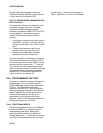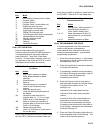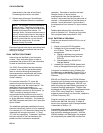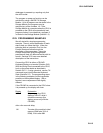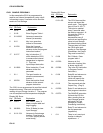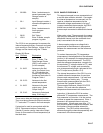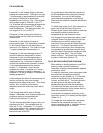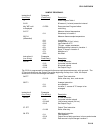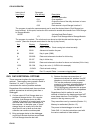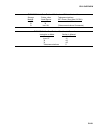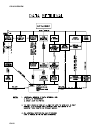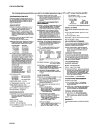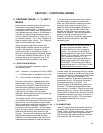
CR10 OVERVIEW
OV-20
Instruction # Parameter
(Loc.:Entry) (Par.#:Entry)
Description
09: P74 Minimize instruction
01:1 One repetition
02:10 Output the time of the daily minimum in hours
and minutes
03:2 Data source is Input Storage Location 2.
The program to make the measurements and to send the desired data to Final Storage has
been entered. At this point, Instruction 96 is entered to enable data transfer from Final Storage
to Storage Module.
10:P96 Activate Serial Data Output.
1:71 Output Final Storage data to Storage Module.
The program is complete. The clock must now be set so that the date and time tags are
correct. (Here the example reverts back to the key by key format.)
Key Display Explanation
*5 00:21:32 Enter *5 Mode. Clock running but not set correctly.
A 05:00 Advance to location for year.
86 05:86 Key in year (1986).
A 05:0000 Enter and advance to location for Julian day.
197 05:197 Key in Julian day.
A 05:0021 Enter and advance to location for hours and minutes (24 hr. time).
1324 05:1324 Key in hrs.:min. (1:24 PM in this example).
A :13:24:01 Clock set and running.
*0 LOG 1 Exit *5, compile Table 1, commence logging data.
OV6. DATA RETRIEVAL OPTIONS
There are several options for data storage and
retrieval. These options are covered in detail in
Sections 2, 4, and 5. Figure OV6.1-1
summarizes the various possible methods.
Regardless of the method used, there are three
general approaches to retrieving data from a
datalogger.
1) On-line output of Final Storage data to a
peripheral storage device. On a regular
schedule, that storage device is either
"milked" of its data or is brought back to the
office/lab where the data is transferred to
the computer. In the latter case, a "fresh"
storage device is usually left in the field
when the full one is taken so that data
collection can continue uninterrupted.
2) Bring a storage device to the datalogger
and milk all the data that has accumulated
in Final Storage since the last visit.
3) Retrieve the data over some form of
telecommunications link, whether it be RF,
telephone, short haul modem, or satellite.
This can be performed under program
control or by regularly scheduled polling of
the dataloggers. Campbell Scientific's
TELCOM program automates this process
for IBM PC/XT/AT/PS-2's and compatibles.
Regardless of which method is used, the
retrieval of data from the datalogger does NOT
erase those data from Final Storage. The data
remain in the ring memory until:
They are written over by new data (Section 2.1)
Memory is reallocated (Section 1.5)
The power to the datalogger is turned off.
Table OV6.1-1 lists the instructions used with
the various methods of data retrieval.



